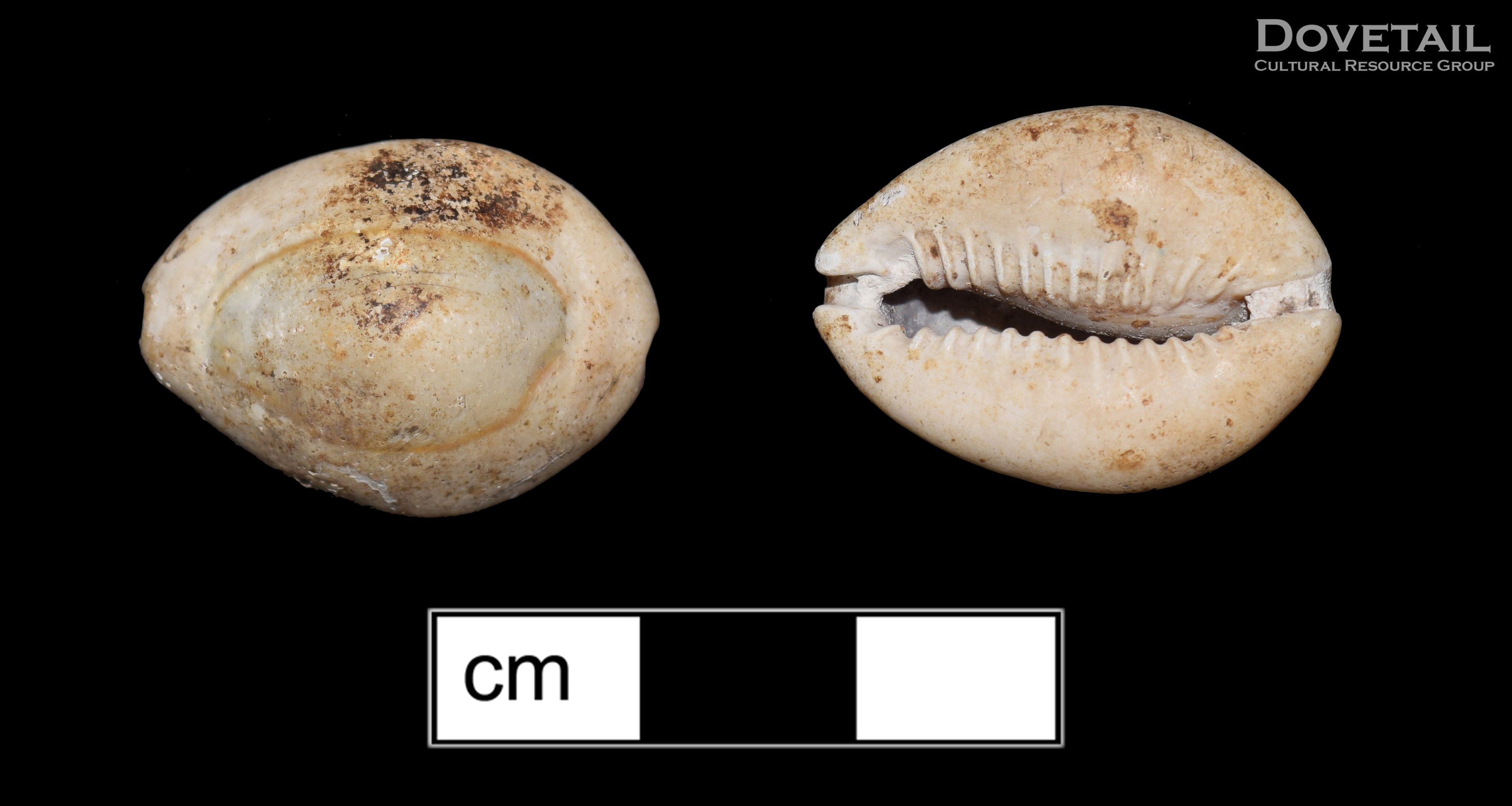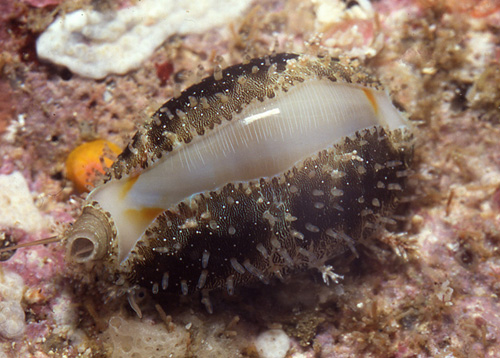Featured Fragment – Cowrie Shell
By D. Brad Hatch
This month’s artifact began its life somewhere in the Indian or Pacific Ocean, likely made its way to the west coast of Africa, crossed the Atlantic, then traveled up the Rappahannock River before ending up in Fredericksburg. The object, a small cowrie shell, was recovered during Dovetail Cultural Resource Group’s 2019 excavations at the intersection of Hanover and Sophia Streets (Photo 1). Discovered in the cellar fill of the first print shop in Fredericksburg, established in the early 1840s in a 1790s-built dwelling, this shell likely dates to the eighteenth century, when this area of the town was a center of trans-Atlantic trade.
Cowries are a type of marine gastropod, similar to snails, that live primarily in the warm waters of the Indian and Pacific Oceans (Photo 2). They are generally small, measuring less than about 2 inches in length and comprise several species. The cowrie recovered by Dovetail is a Monetaria annulus, commonly known as the “ring cowrie” due to orange ring on its exterior surface.
Often found in association with archaeological contexts associated with enslaved individuals, many archaeologists have viewed these shells as indicators of African identity or spiritual practices on sites, referred to as “Africanisms,” because of the significant use of cowries as money in Africa during the historic period. However, recent research on the distribution of these shells by Barbara Heath suggests that they may be less of a sign of African identity and more of a byproduct of the economy of the trans-Atlantic slave trade (Heath 2016).
Rather than shells being brought to North America on the bodies of enslaved Africans as adornment such as necklaces, Heath argues that the vast majority of cowries recovered from archaeological contexts in Virginia were shells that could not be used for trade in Africa (Heath 2016:36). This is supported by the fact that the vast majority of cowries recovered archaeologically are Monetaria annulus, which were seen as inferior by African traders compared to Monetaria moneta (Heath 2016:36). These “seconds” would have been offloaded in the colonies, particularly during the height of the slave trade in the eighteenth century, explaining their high concentrations in port towns and the areas immediately surrounding them.
The cowrie recovered from the intersection of Sophia and Hanover Streets supports this line of reasoning and illustrates the trans-Atlantic connections in this part of Fredericksburg during the eighteenth century. This portion of the town would have been heavily focused on maritime trade in the eighteenth century, with warehouses just across Sophia Street along the waterfront and the original ferry landing and wharf only about one block away. With this in mind, it is easy to imagine this discarded shell finding its way into a refuse pile and eventually becoming incorporated into the fill for the print shop cellar when it was abandoned. Though still perhaps occasionally used by enslaved people as currency (Heath 2016:37), cowries in the context of port towns and their surroundings serve as better indicators of trans-Atlantic trade and economic strategies than they do of African identity or spiritual practices. The story of this small object therefore serves to underscore the importance of understanding the archaeological and historical context of the artifacts that we excavate.
Any distributions of blog content, including text or images, should reference this blog in full citation. Data contained herein is the property of Dovetail Cultural Resource Group and its affiliates.
References:
Heath, Barbara J.
2016 Cowrie Shells, Global Trade, and Local Exchange: Piecing Together the Evidence for Colonial Virginia. Historical Archaeology 50(2):17–46.
Wikipedia
2019 Monetaria annulus. Electronic document, https://en.wikipedia.org/wiki/Monetaria_annulus, accessed October 2019.


